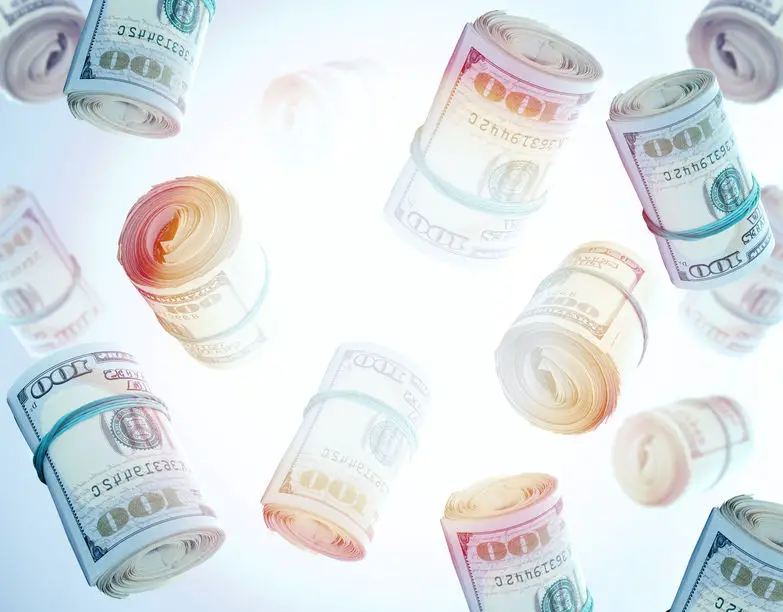Best Stocks for the Dividend Capture Strategy
Before you invest in anything, you need to have a solid investment strategy in place to guide your decisions. You can think of it as your game plan when building your portfolio. It is what guides you through the investment process based on your short-term and long-term financial goals, your future capital needs, and your risk appetite.
As you would expect, the investment strategy advising the decisions of a 27-year-old working professional will be vastly different from that of a 67-year-old retiree. Some strategies focus on capital appreciation to spur rapid growth while others take on a more laid-back, low-risk approach focused on wealth protection.
The dividend capture strategy combines the best of both worlds. What is dividend capture, and how does it work? Here’s everything you need to know.
What Is Dividend Capture?
Dividend capture puts a new spin on an old investment strategy. Unlike traditional approaches that revolve around buying stable dividend-paying stock and holding on to them to generate a steady stream of income, dividend capture uses an active trading strategy.
You identify high-yield stocks, buy them, hold on to them for a short period – long enough to “capture” the dividend they pay – and then sell them. How short is “short?” It’s not unusual to buy, hold, and sell stock all in a single day using this method.
The Basics of Dividends
Before getting into the nitty-gritty of what the strategy is about, it’s important to have a firm grasp of how dividends work. A dividend refers to money that a company pays out to its shareholders in cash. This money forms a portion of the company’s earnings over a specific period, as determined by the board of directors.
For instance, Microsoft stock is currently trading at $243 a share. The company pays a dividend of $0.56 per share every quarter, which translates to $2.24 per year. That’s a yield of 0.92% on your investment that you would receive in cash.
Keep in mind that this amount has nothing to do with the appreciating value of the stock in question. This would essentially be the profit you make over and above what you initially invested, should you decide to sell your shares at any point.
Instead, it is simply the money you receive in cash when the company distributes a portion of its profits to its shareholders, quarterly, biannually, or annually. What you then do with the cash you receive is entirely up to you. You can receive the dividends in your brokerage account as a cash payment, or you can choose to reinvest it to buy even more of the company’s securities to expand your stock portfolio.
That being said, there are four important dates you need to be aware of when investing in dividend-paying stocks.
1. The Declaration Date
This is the date when the company’s board of directors announces its approval of the dividend payout, the record date, and the payment date.
2. The Ex-Dividend Date
The ex-dividend date, or ex-date for short, is the date when new buyers investing in the stock of a particular company don’t qualify to receive the dividend payout. On the other hand, if you owned the stock before the ex-date, you could expect to receive payment.
For instance, if the ex-date for ABC Corp. was February 1, and you sold your shares on that same day, you would still be entitled to receive the dividend. Keep in mind that if you sold your shares on the ex-date, the sale would settle after three days. This is known as the T+3 settlement period.
3. The Record Date
This is the cut-off date after which new buyers investing in a particular company’s stock don’t qualify for the dividend payout. If you sell your shares just one day before the record date, you will not qualify for the dividend. You’ll need to have purchased the shares before the ex-dividend date and “own” them by the time the record date rolls around given the T+3 settlement period requirement.
4. The Payment Date
This is the date when the dividends are credited into the shareholders’ investment accounts or paid in the form of checks.
Dividend Capture Strategies – How Do They Work
The whole premise of dividend capture strategy investing is:
- Identify a high-yield stock that’s just about to pay a dividend
- Purchase the stock in question before its ex-dividend date
- Sell the stock on the ex-dividend date itself or any date thereafter
- Pocket the payout
What if the price of the stock falls after the dividend announcement? What happens then? The best thing to do in such circumstances is to wait until its value bounces back to what it was at the time you bought it.
You don’t have to hold on to the shares until the payment date. You can sell them at any time provided it’s on or after the ex-date. You would still qualify to receive the dividend payment.
It’s important to state that stock prices do have a history of appreciating in the period leading up to their ex-date. By buying shares before this date, what you’re attempting to do is “capture” the dividend and then offload it before the share price drops to what it was.
Timing is everything when it comes to this particular investment strategy.
Does Dividend Capture Work?
On the surface level, the strategy appears to be relatively straightforward – find a high yield stock, buy it, “capture” the dividend, sell it, and pocket the payout. It does, however, have its fair share of risk, especially if you’re a proponent of the Efficient Markets Hypothesis (EMH).
EMH fronts the idea that all information about investment securities – like stocks – is already factored into their prices. According to the hypothesis, this means that there’s no amount of analysis that can give an investor an edge over the “market” which is essentially the collective name for all the other investors.
Share prices can rise before the ex-date in anticipation of the upcoming dividend. However, these prices normally fall shortly before, shortly after, or on the payment date itself. Therefore, if you think about it, the market has already “priced in” the dividend, so there’s no real value you would be gaining with your timing.
Dividend Capture Strategy With Options
With that in mind, sophisticated investors prefer to employ a slight variation of the strategy known as dividend capture with options. In this technique, an investor tries to capture a larger portion of the full dividend amount by trading options that would benefit from a fall in the price of the stocks in question on the ex-date.
An option is a financial tool whose subsidiary is based on the price of its underlying security, which in this case would be the stocks. If you enter into an options contract, you get the opportunity to buy or sell the underlying asset at a predetermined price over a predetermined period. An option could either be:
- A call – where the investor buys the stock at a specific price within a specific period
- A put – where the investor sells the stock at a specific price within a specific period
A put dividend capture strategy, for instance, is a great way to capture dividend income while mitigating any potential losses that might come about from a fall in the stock price.
For instance, if you invested in stock priced at $100 and are worried that it might fall in value around the ex-date, buying a put would protect you from any unwarranted loss you might incur.
FAQs
Below are the answers to some of the most frequently asked questions by investors looking to employ a dividend capture strategy.
What are the best dividend capture stocks?
When choosing the best stocks for the dividend capture strategy, the rule of thumb is to pick the ones with very high dividend yields, adequate market cap, and a dividend that is adequately covered by company earnings. You want to purchase them just before they go ex-dividend. Here are five stocks worth checking out:
| Company Name | Abbreviation | Dividend Yield Per Period (%) |
| National Health Investors Inc. | NHI | 6.6% |
| Artisan Partners Asset Management Inc. | APAM | 6.1% |
| Prudential Financial Inc. | PRU | 5.4% |
| International Business Machines Corp. | IBM | 5.1% |
| Safety Insurance Group Inc. | SAFT | 4.5% |
How do I capture dividends from options?
On the day before the ex-dividend date, buy 100 shares of the underlying security. Then, sell one call option against the stock. This option you pick needs to have a “delta” value that’s close to one, meaning that for every dollar rise or fall in the stock price, the option also moves a dollar in the same direction.
Can I sell my stock on the record date and still get a dividend?
If you’re a new buyer investing in stock after the record date, you won’t qualify for the dividend payout. If you already own the stock and choose to sell them one day before the record date or on the record date, you also won’t qualify for the dividend payout. You need to be on the company’s books on the date of record to be eligible for payment.
Bottom Line
If you’re looking for an income-generating investment, a dividend capture strategy provides an alternative approach to traditional buy-and-hold strategies. Keep in mind that the profitability of this strategy is affected by factors such as tax-treatment, brokerage fees, and whether or not you’re a proponent of the Efficient Markets Hypothesis.
Have you considered investing in Daily Fantasy Sports? Check out our blog to find out why DFS is a lucrative investment vehicle.

